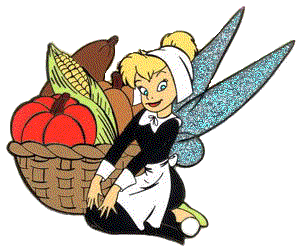NOVEMBER 2009
Featured Category
CDHM Asst Editor
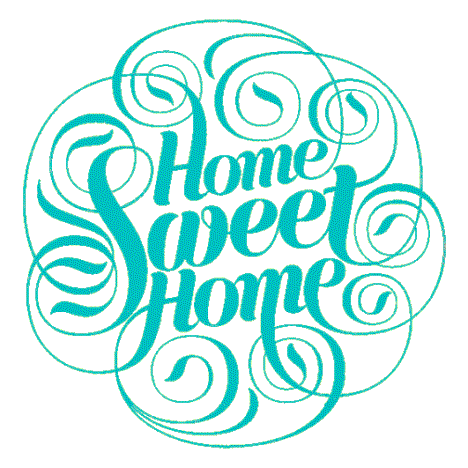
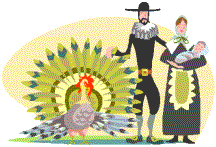 How many of us still remember the original story of Thanksgiving? How the Pilgrims, bedraggled and starving on the new shore they had planned to call home, were so grateful to their new Indian friends and their gifts of food that they decided to throw a feast and give thanks for such a wondrous bounty?
How many of us still remember the original story of Thanksgiving? How the Pilgrims, bedraggled and starving on the new shore they had planned to call home, were so grateful to their new Indian friends and their gifts of food that they decided to throw a feast and give thanks for such a wondrous bounty?
Coming home is still a special occasion for far-flung families. Gathering at the old family home place, surrounded by the warm and familiar sights, sounds and smells is one of the greatest feelings in the world.
What is it that makes home such a special place to come back to, and how do we bring that special something into the dollhouse?
Two such special touches are samplers and antique furniture. What young girl - and some boys! - haven't carefully stitched words and pictures into a piece of fabric stretched inside an embroidery hoop? Antique stitched creations are quite prized by collectors and miniature collectors are just as enamored of Eliza Bentley's teeny replicas.
"I actually got started making miniatures quite by accident. I had been a designer of full-size embroideries for many years with designs appearing in many magazines, both here in the UK where I live and in the US, when a friend in America sent me a miniature embroidery which she had found in a thrift shop. I loved it and was intrigued by the idea of designing and embroidering in miniature, so of course I had to give it a try," she said.
And a new miniature artist was born. The challenge of trying to see how complex a picture she could fit into 1/12th scale enthralled her.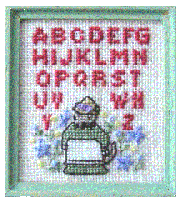
"I'm still working on the challenge, still loving it, and I more or less exclusively design and make miniature embroideries these days - apart from a few full-size embroideries as gifts for family and friends for birthdays and Christmas!" said Eliza.
Miniature furniture artist Barbara Vajnar of Bubba's Country Cupboard also started out thinking big before working small.
"I first became interested in making miniature antique furniture because I collect and love the larger pieces. I love the history behind some of the pieces I make; whether it be a family made or owned piece. Before I start creating a new piece of furniture I try to research the history of where it came from if at all possible. Most of the pieces of furniture I make have actually come from historical homes, auction houses, antique stores and pieces that are in our family homes. I also take pictures when I can to include with many of them and many of them," explained Barbara.
With antiques, whether stitching or woodwork, the authenticity is definitely in the shrunken details.
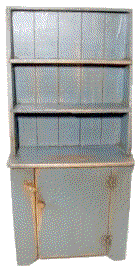 "In 1/12th scale it is hardly ever possible to reproduce a whole sampler - they are usually quite large and one of the frustrating things about doing this is that I can't fit in as many elements of the original sampler as I would like. It's just a question of picking out parts of the sampler that will fit in a 1/12th scale frame - I make my own frames, so that does give me a little bit more leeway," said Eliza.
"In 1/12th scale it is hardly ever possible to reproduce a whole sampler - they are usually quite large and one of the frustrating things about doing this is that I can't fit in as many elements of the original sampler as I would like. It's just a question of picking out parts of the sampler that will fit in a 1/12th scale frame - I make my own frames, so that does give me a little bit more leeway," said Eliza.
And part of what she chooses has to be text and the name of the original embroiderer if possible.
"I always associate old samplers with a text, and I also like to include a genuine name and date if possible, because that also gives an authentic feel to a sampler - and I try to come up with a layout that gives something of the feel of the original, which is not always easy but I like to try and make it look as close to a scaled-down version of the original as I can. The reproductions of original samplers are my favorites to make, but I do also make a range of modern samplers completely from my imagination."
Color is also important. Due to their age, most samplers are somewhat faded, and certain colors were more commonly produced than others.
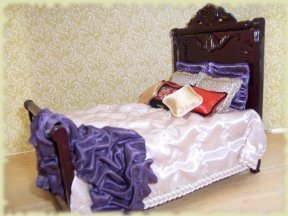 "I do like to try and stick as closely as I can to the colors used by the young ladies who embroidered the original samplers. Sometimes they are faded, of course, but often the colors are still surprisingly vivid considering the age of work. I find with miniatures subtle colors are best, though I did reproduce a sampler which a little Scottish lass called Katy (she stitched her name as Katty, which I thought was very sweet) had stitched in bright reds and greens - quite common in Victorian times as red and green threads were cheap to buy - and that turned out quite well. It is possible to buy space-dyed threads which are designed to reproduce the faded look of old samplers and I do use those for some of my designs if I can get the right color ranges," Eliza explained.
"I do like to try and stick as closely as I can to the colors used by the young ladies who embroidered the original samplers. Sometimes they are faded, of course, but often the colors are still surprisingly vivid considering the age of work. I find with miniatures subtle colors are best, though I did reproduce a sampler which a little Scottish lass called Katy (she stitched her name as Katty, which I thought was very sweet) had stitched in bright reds and greens - quite common in Victorian times as red and green threads were cheap to buy - and that turned out quite well. It is possible to buy space-dyed threads which are designed to reproduce the faded look of old samplers and I do use those for some of my designs if I can get the right color ranges," Eliza explained.
The coloring details of a piece of antique furniture are just as important.
"I use two different colors in one piece for the aging. I like apple butter brown and wooden bucket brown. For example, take a good look at an older cupboard; to me I see more than one color of aging," explained Barbara.
"The antiquing process is my favorite part of making the furniture. Each piece becomes a one of a kind piece of art with character and personality. I have a few methods of antiquing; the one I use most is marking up the furniture by scratching the paint off here and there. If there is a counter I might put a few small knife marks or dings."
Varieties of samplers are as numerous as styles of antique furniture and the artists both enjoy choosing pieces to recreate.
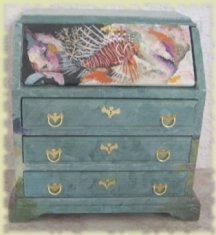
"My favorite piece that I have made is the Irish cupboard and a secretary or plantation cupboard that has yet to be released. The secretary will make its debut at the Dedham Show in Massachusetts on November 10th. Right now I only have a prototype made and will not be making more than six of these. Most of my pieces are limited editions except for tables and chairs - there never seems to be enough of these to go around," said Barbara.
"All the traditional samplers I make are based on actual old samplers. I have always loved samplers - I would really love to own a genuine old sampler - and I collect books of pictures of old samplers, mostly museum collections, so I have a lot to chose from when I am looking for ideas. I'm not sure about favorites. I always have a picture in my mind of how I hope a design will look when it's finished and I'm always pleased with a design if it ends up looking like I thought! I suppose perhaps the design I was most pleased with was a 1/12th scale map sampler of the British Isles with all the counties outlined in color. I wasn't sure I was going to be able to draw it or stitch it in such a small scale, but I did and it worked. But it was so hard to stitch and keep track of where the different colors for the county outlines should go that I've never attempted to stitch it again!" said Eliza.
The possibilities are endless for bringing the familiar warmth of home into the dollhouse. Two items Barbara and Eliza think would be cozy additions are a pie safe and a needle lace sampler, respectively.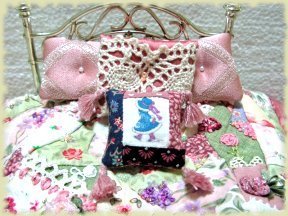
"I have a couple of new items on the drawing board and one will be the pie safe, a cupboard that came from a farmhouse in Williamsburg. I really enjoy making the custom cupboards that people send me pictures of; I find it rewarding and I love a challenge," said Barbara.
"The one thing I really would like to stitch which I havenít yet is a really old sampler, dating, I think, from the 1920s. It is stitched in freehand embroidery with needle lace. It is so pretty and so different that I would love to stitch it in miniature. I love needle lace but I'm still a novice at that myself and I haven't yet worked out quite how I can manage to do it in miniature - but one day, hopefully, I'll give it a try!" added Eliza.
Come home to your favorite gallery choice here at CDHM and see what will bring your memories into miniature!
Visit the Furniture Galleries or the Needlework, Crochet and Linens Galleries now!
Custom Dolls, Houses & Miniatures / CDHM




